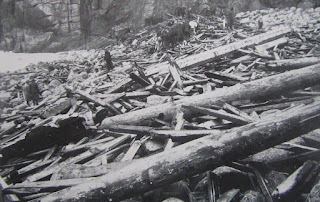Not only bricks, but reminders of everyday life for the working class people of Bootle. I found tiles, floor covering, glass, parts of buildings,and more. But wait a minute, what is that item, top left.....
I was thrilled with all my "finds" (I will be taking them back in due course. I feel they are part of a "living" memorial and museum). But then I saw something that took me aback - a headstone! With writing on it! What luck! Scrambling down I took a photo of it in situ. I couldn't wait to get home to research it- I don't think you could have found a happier person at the beach that day! This is what I discovered using some of the information on the headstone...
Samuel Tolson was born in 1756 in Cumberland. He married a widow, Jane Al(e)try on 11th February 1813 and died in 1842. Samuel had 10 chldren by his first wife Ann (nee Thompson). He was a tea dealer lving in Phygiate Street, Liverpool (per the 1832 Trade Directory of Liverpool). His second wife Jane died in 1850. Dinah, whose name is also inscribed on the stone was his daughter. She died in 1848 of consumption.
I have researched 100s of family stories and this was the most astonishing and rewarding. A family history from a stone not in a church, but on the beach!
After posting my research on a local Facbook page I was contacted by a descendant of Samuel who was thrilled to know where it was. Many people suggest that the stone should be moved, perhaps to another churchyard. However it is huge, heavy and in an inaccessble area. Besides, it is no longer in the place of Samuel's burial. Many people have told me they have visited the beach since reading my FB post. I think it is fitting that his memorial is left in a beautiful place and is surrounded by reminders of the lives of his family, friends and neighbours.
RIP with your memories Samuel












